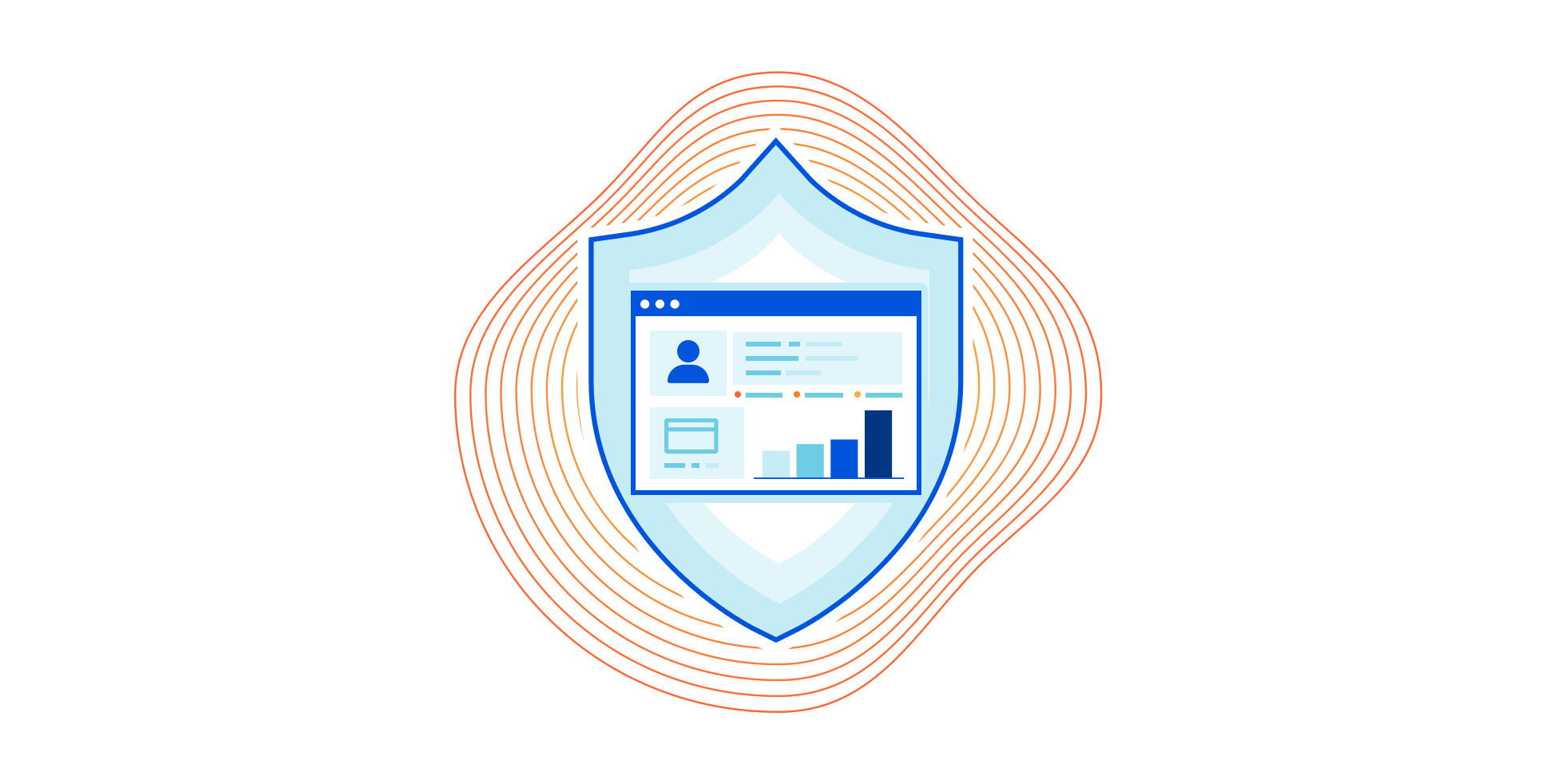
Supply chain attacks are a growing concern for CIOs and security professionals.
During a supply chain attack, an attacker compromises a third party tool or library that is being used by the target application. This normally results in the attacker gaining privileged access to the application’s environment allowing them to steal private data or perform subsequent attacks. For example, Magecart, is a very common type of supply chain attack, whereby the attacker skimms credit card data from e-commerce site checkout forms by compromising third party libraries used by the site.
To help identify and mitigate supply chain attacks in the context of web applications, today we are launching Page Shield in General Availability (GA).
With Page Shield you gain visibility on what scripts are running on your application and can be notified when they have been compromised or are showing malicious behaviour such as attempting to exfiltrate user data.
We’ve worked hard to make Page Shield easy to use: you can find it under the Firewall tab and turn it on with one simple click. No additional configuration required. Alerts can be set up separately on an array of different events.

What is Page Shield?
Back in March of this year, we announced early access to Page Shield, our solution to protect end user data from exploits targeting the browser.
Earlier today, we announced our acquisition of Zaraz, a tool built on Workers that allows customers to easily load third-party tools on the cloud, instead of loading their JavaScript code in the browser, directly from the Cloudflare UI with immediate performance and security benefits. But not all applications use, or wish to use, a third-party manager. Nonetheless, we have got you covered.
Page Shield leverages our position in the network as a reverse proxy to receive information directly from the browser about what JavaScript files and modules are being loaded. We then provide visibility, analyse, and warn you whenever a JavaScript file is showing malicious behaviour.
Examples of compromised JavaScript files include Magecart attacks, cryptomining, and adware. With the ever-growing popularity of SaaS-based applications and services, it is very rare to find an application that does not leverage or load JavaScript code directly from third parties out of the application owner’s control, making detecting and mitigating compromised files even harder.
How hard is client-side security?
Early indications from Page Shield indicate that, on average, any given application is loading scripts from eight third-party hosts. These hosts could be owned by large enterprises such as Google, to smaller companies that provide “plug and play” modules that quickly enhance web application functionality (think chat systems, date pickers, checkout platforms etc.). Each one of these third parties can be a target for a potential supply chain attack, making the attack surface very large and difficult to monitor.
To make matters worse, things change fast. On average about 50% of applications are loading scripts from new third party hosts every month. This indicates that the attack surface is not only large, but also changing rapidly.
How does Page Shield work?
As with any security product, we can think of Page Shield as providing visibility, detection, mitigation, and prevention. The first step is visibility.
Visibility
When turned on, the current iteration of Page Shield uses a content security policy (CSP) deployed with a report-only directive to collect information from the browser. This allows us to provide you with a list of all scripts running on your application.
In HTTP terms, this is an HTTP response header added to a sample of page responses from the origin server back to the browser. The CSP header looks like this:
content-security-policy-report-only: script-src 'none'; report-uri /cdn-cgi/script_monitor/reportThe above header instructs the browser that no scripts should be loaded (script-src 'none') and to report any violation to the endpoint provided (report-uri /cdn-cgi/script_monitor/report). Also note that the violation report endpoint resolves to the Cloudflare network where it is processed, so no additional traffic reaches the origin server.
Each violation report sent by the browser, implemented as an HTTP POST request, provides us with information on the script. Here is an example:
{
"csp-report":{
"document-uri":"https://www.example.com/",
"referrer":"",
"violated-directive":"script-src-elem",
"effective-directive":"script-src-elem",
"original-policy":"script-src 'none'; report-uri /cdn-cgi/script_monitor/report",
"Disposition":"report",
"blocked-uri":"https://cdnjs.cloudflare.com/ajax/libs/jquery/3.2.1/jquery.min.js",
"status-code":200,
"script-sample":""
}
}This report tells us:
The page the script was loaded from (
document-uri)The referrer, if applicable
Which CSP directive was violated
The full CSP that contains the directive
The full link to the JavaScript file
The response code the browser received when loading the file. In the example above, the response code is 200, which indicates that the file was loaded successfully.
By collating all the information provided in the reports and enhancing it with additional data, we are able to provide detailed information on every script being loaded by your application, both via the Cloudflare UI and API.
All Cloudflare Pro zones have access to our Page Shield script reports. Additionally, Business and Enterprise zones have access to page attribution information, allowing you to quickly identify where a script is being loaded from within your application. Business and Enterprise zones can also set up alerts on a number of script change events.
Detection
Application owners might be leveraging content security policies already to ensure only specific scripts are loaded. However, CSPs often tend to be too liberal, and browsers provide no native mechanisms to detect when JavaScript files show malicious behaviour. This includes JavaScript code that is allowed to be loaded according to a content security policy, highly reducing their effectiveness.
With Page Shield we believe to have a real opportunity to help our customers with malicious behaviour detection.
For any JavaScript file found in your zone by the system, we will perform a number of actions aimed at detecting malicious behaviour:
Any JavaScript file loaded from a hostname categorised as malicious in our threat feeds will be flagged appropriately. This includes parent domains.
Similarly, if specific URLs are categorised as malicious in our feeds, these will also be flagged. In this latter case, given the exact file has been categorized as malicious, an attack is likely ongoing.
Finally, we will download the file and run it through our classifier. The classifier performs deobfuscation, normalisation and decoding steps before looking for correlations between form field fetches and data exfiltration calls. The stronger the correlation the more likely the script is performing a Magecart type attack. We will post additional technical details about our technology in follow-up posts — stay tuned!
Our Enterprise customers can purchase the full set of Page Shield capabilities, including the detection capabilities. Please contact your account manager.
As we build the product further through next year, we plan to add additional detection signals as well as improve upon our classifier and detect additional attack types, including adware, ransomware and crypto mining.
Once a malicious signal triggers on a JavaScript file, Cloudflare is able to notify you via an alert that can be set up via email, webhook, PagerDuty, and other formats.
Prevention and mitigation
Many of our larger customers have content security policies already, and although it is easy to add an HTTP response header that implements a CSP via Cloudflare, we can do better.
Although not included in this immediate release, we are already hard at work to bring both prevention and mitigation options to Page Shield:
Prevention by allowing easy CSP generation based on observed active scripts, allowing for editing and redeploying of policies as required either via the dashboard or directly via API as part of a deployment pipeline.
Blocking by leveraging our proxy to allow for malicious scripts to be removed inline from HTTP response bodies.
Get started
If you already have a website on Cloudflare, upgrade to any of our paid plans to start leveraging Page Shield features today without any additional configuration required. You can also use our API to leverage Page Shield features.
If you do not have a website on Cloudflare, signing up only takes 5 minutes!

